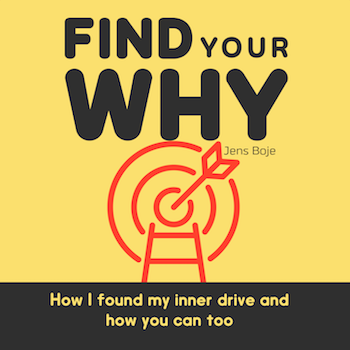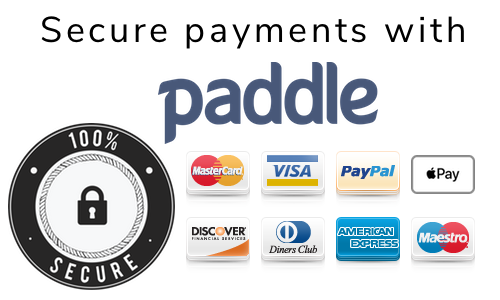Login with the email address you are subscribed to our newsletter.

Find your drive - your why
Forget passion and find something much more valuable and thus your start into a bright future, where you know what you want and that powers you.
Read online or download as ePub, PDF and Kindle and audiobook.
Welcome
Everyone and his mom are talking about passion, but in such overused and misused fashion, that it depressed me. I did not have a passion, and I could not find it. Regardless of what I heard, it was just the same blah blah blah. It just frustrated me even more.
I tried a lot and took many wrong turns, but eventually, I found something that was way more important than any passion - my why - my drive.
My why fires me without burning me. It is deeper than passion. It's close to the core. The core of my being. When my why aligns with what I am doing, I feel satisfied, fulfilled, relaxed, calm. The perfect state of satisfaction.
You can get that too, and I show you exactly how I got there. I show you the 4 exercises (+ a small bonus) which helped me the most to find my why. Compact, no fluff, no endless repetition and no esoteric. The real reading time might be short, but it is a workbook. You need to do the exercises, otherwise, you will fail.
I welcome you to join on your journey to your why - what drives you.
Contents
Listen to the retail sample. You can get the full audiobook as part of the download bundle.
Why this book?
I have gone through most of my life without knowing why I was doing, or had not done, something. While I wasn’t aware of this lack of knowledge, I suppose I did try to subconsciously find the answer by asking questions such as:
- Why do you still do this job?
- What do you actually want?
- How do you want to go on living your life?
However, through all of my consistent pondering, practically nothing changed.
At some point, I came to the realization that things could not continue in the same way. To change, I set out in search of my why, my inner drive. What do I actually like to do and why? Unfortunately, all of the modern literature and videos about “finding your passion” couldn’t really answer my question because it didn’t help me find my why. In fact, the opposite happened.
I was frustrated because, according to the Gurus, I seemingly had no passion. Besides, there were almost no exercises at all; just a lot of hot air.
Today, I know that this so-called passion is not important to me because I have found my why and my inner drive. Interestingly, I can’t compare that to passion, at least not in its traditional definition.
This is especially true in terms used to describe it, like the infamous “burn with passion”. I also have an issue with Duden’s definition of passion:
- A state of mind that expresses itself in emotional behavior that is difficult to control by the mind (from which something is striven for, desired for, a goal pursued)
- Expressing in strong feeling, in fierce, impetuous longing for possession, affection for a human being
- Great enthusiasm, strong (pleasure-oriented) inclination, passion for something that you always try to acquire, for a certain activity that you dedicate yourself to
I like certain activities and things as much as the next person, but I don’t follow them with constant devotion or burn for them, which quite frankly sounds dangerous, especially in IT.
My why, on the other hand, drives me and fills me, even without me being on fire for it. It goes deeper than passion, straight to the core of my very being. If my why is consistent with my job, then I feel satisfied, relaxed, and calm.
I feel a state of satisfaction and not happiness because the latter is only temporary. However, the road to this satisfaction was not always easy. I tried a lot of approaches and made many detours until I finally found my why. Now, I want to help you find your why with the same exercises that ultimately led to my success.
Buckle up and get ready to go on a journey to finding your why.
Introduction
Thanks for joining me and for your interest in participating in these exercises. It has helped pave the way to my success and I really hope that it will do the same for you.
Now, I’ll start off by saying that things might get deep. I’ll be talking about feelings and the subconscious and it might be challenging for some. I’ve been there. As a rational thinker, delving into this put me in somewhat unfamiliar territory.
However, I soon realized and accepted that rational thinking comprises just a small part of our brain. You may have heard that saying, ‘it’s just the tip of the iceberg‘. This is exactly what our brains are like. The tip, in this case, refers to the logical and rational part of the brain, while the large mass below the water is our subconscious.
While our rational tip is responsible for giving us insight and logic, our subconscious becomes a vast and growing collection of experiences and emotions, the latter more than likely being tied to the former. For example, if you fell off of your bike when you were younger, you’ll remember the event itself as well as the emotions that went along with it.
This ability of our brain to link experiences and emotions is evident in everything that we do.
Depending on what book you’re reading, our consciousness is between 3% and 5% of our brain. The remaining 95+% is taken up by our subconscious.
Routines, habits, beliefs and more all happen below the radar, and we are often not even aware of it. When was the last time you actively thought about brushing your teeth? Try explaining it, I’ll wait.
It’s hard for you and you have to think about it in a concentrated way and even make yourself aware of the actual process. It is an automatism, we brush our teeth without thinking about the individual movements.
However, these automatisms do not just materialize out of nowhere. We must learn them first. The more we do these actions, the more automatic they become. Once our brains have learned how to do these movements, it can get back to other things.
As a practical example, try brushing your teeth with the other hand. If you’re right-handed, use the left hand. You will find that you have to consciously think about the movements again and concentrate on performing them correctly. However, if you keep it up long enough, you’ll find that it also becomes an automatism.
Why am I telling you all this? Yes, to encourage good oral health but also to be aware of the importance of subconscious thinking. Without it, you will not make any progress in finding your why.
Your subconscious plays a pivotal role, so use it. Follow your gut feeling in the upcoming exercises. However, while it can help you, it is also completely subjective. It is essentially just a feeling that feels right based on past experiences and emotions. While sometimes beneficial, it can also be wrong or prevent you from taking action.
Habits, routines, and automatisms are not permanent and they can be changed. However, they will always remain in our brains even if they are no longer actively used. It will never be completely gone, no matter what some gurus say. It fades, becomes weaker yes, but never goes away completely. Accept it, but don’t make it an excuse.
When you work through the exercises, listen to your feelings and use them. Don’t try to understand them in a rational way. The answer will be given to you from your subconscious anyway so using rational thinking will be a futile exercise.
We’ll start with the first exercise in the next chapter. At the end of each exercise, I will also give you some advice as to what has helped me and others. If you have any questions or suggestions, or if you’re stuck, don’t hesitate to get in touch with me. Send an e-mail to buch@jensboje.de or use the contact form on my site and I’ll answer.
Advice
You can do the exercises in any order. However, I advise you to start with Exercise 4. If it works for you, it will make completing the rest much easier.
However, since it is a technique used for mental training and does not necessarily work for everyone, I have intentionally put it at the end. If it doesn’t work for you, simply do the other exercises as they’re set out.
It is important that you do every exercise. Findings from one exercise inevitably led me to new findings from another and also clarified why I liked doing something.
It is essential that you take your time and pace yourself. Take a few hours for Exercises 1 to 3 and don’t do them one after the other. Too much at once will drain you. It also prevents helpful thought processes in our subconscious that work for us during these breaks.
An example of this is like where you always seem to get the best ideas in the shower or even on the toilet. Perhaps you’re like me and inspiration strikes while you’re simply enjoying a walk. This is our subconscious in action. When we take a break from our problems or active thinking processes and simply do something else, our subconscious mind can work in peace and can provide the solutions to these problems.
For me, the entire process took several weeks. It may go faster for you but don’t pressure yourself.
If possible, use paper and pen for the exercises. Writing or drawing something by hand supports our thinking processes better than just typing on the keyboard.
Be open and curious. I can tell you from my own experience that when you think something is stupid, it can seriously hinder your thought processes. I know that some part of us is always bitching though but like that annoying co-worker, just ignore it.
Also, I will be free with my advice, suggestions, and personal examples throughout the book. I promise that I’m not doing this out of narcissism or some sort of superiority complex. I have just experienced everything that I’m writing about and I’d like to share this with you to help make the process easier.
I also repeat certain steps or advice, not because I’m annoying, but because I really want to help you understand the importance of certain concepts.
